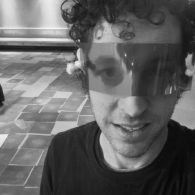These lines, recorded in the plat books and in GIS data for Monroe County, Indiana, delineate the surveyed edges of plot PT NW NE 30-9-1E - Plat 4 for the purpose of ownership.
They mark the boundaries of the land we purchased in 2008 to have our own small base of operations for interweaving our living, growing indigo, and making.
But pinning down boundaries is tricky business. They aren’t always at the edges, but can be surfaces as well. In tilling, I broke through the surface of time, and all sorts of stuff came out, revealing themselves like the product of an unforeseen seed, planted over time as, year by year, fallen leaves turned to soil around them.
The idea of land ownership has always been difficult for me to understand. Even as I child I clearly saw the land is its own thing.
We just impose on it.
In the 19th century, as imaginary lines of ownership were drawn across Monroe County, those lines were transposed on the landscape through the planting of trees along boundary lines.
Some still stand, in between, like the “witness trees” depicted in old survey records. But others have fallen, pushing back on our impositions.
Seeds bookend a plant’s life. After we have taken their color for dyeing, our indigo plants turn their energy to reproduction—to flowering, and producing seeds—the last thing they do in the fall before dying. It is from these seeds that the plants are reborn each spring.
Seeds are simultaneously the past and the future, and each spring, in planting, I exist for a moment between everyone who has done this work before me, and the colors that the soil will yield this year.
In this same ground I have planted two cisterns. The first collects rainwater for dyeing.
Our dye vats are made by composting the indigo that we’ve grown on this land until it looks like dirt, and then fermenting it in an alkali made from wood ash. From this brown comes our blue.
After the cloth is dyed, it is rinsed in the rainwater we’ve collected. The indigo, insoluble in water, holds fast, but everything else that was born of our soil, is captured in the rinse water and diverted to the second cistern, to water the indigo plants. Just like the dye vats that are spread on the field at the end of their life, this rinse water nurtures future crops.
The “seeds” that I’ve gathered from my indigo plot remind me of my place here.
No matter how the title or deed is worded, We’re only passing through, planting our own seeds in the soil that time will cultivate.
This requires care. Gathered too early, seeds won’t grow, and gathered too late and they may drop, sprouting prematurely on a warm day, only to fall victim to a freeze.
About the Author
(C) 2025 Dilettante Army
Dilettante Mail
Get updates from us a few times a year.



Dilettante Mail
Get updates from us a few times a year.